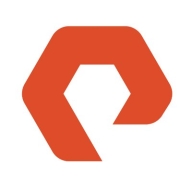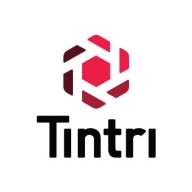


Tintri VMstore T7000 and Nutanix Unified Storage (NUS) are closely competing products in the enterprise storage market. Users report better pricing and support with Tintri VMstore T7000, but Nutanix Unified Storage (NUS), with its comprehensive feature set, is viewed as offering better overall value.
Features: Tintri VMstore T7000 offers automated storage management, efficiency, and user-friendly management. Nutanix Unified Storage (NUS) provides robust scalability, extensive integration capabilities, and versatile features.
Room for Improvement: Tintri VMstore T7000 could expand scalability options, enhance reporting tools, and improve integration capabilities. Nutanix Unified Storage (NUS) could simplify management complexity, offer better cost efficiency, and streamline advanced capabilities.
Ease of Deployment and Customer Service: Tintri VMstore T7000 is praised for quick setup and strong customer support. Nutanix Unified Storage (NUS) has a steeper learning curve but benefits from extensive support and documentation.
Pricing and ROI: Tintri VMstore T7000 is cited for lower initial setup costs and quicker ROI. Nutanix Unified Storage (NUS) has higher upfront costs but offers long-term advantages through expansive features, making the investment worthwhile for larger, complex storage needs.
By opting for the gold subscription every three years, you get a free upgrade to the latest controller release.
If you wait more than seven years to buy another one, you get a return on your investment.
For me, the biggest return on investment when using this solution is that we do not have to have much support staff to run it.
The scalability challenge with previous systems is lessened with Nutanix since we can expand by adding new hardware without needing migrations.
We are saving approximately 20% to 25% compared with the competition.
I accidentally had a volume or VMstore running up to 95%, but it was no issue. The performance was still top-notch despite being used over 90%.
We also had one outage where a controller of one of the products had failed and had to be replaced on-site.
Customers always have their issues resolved promptly.
Pure has good storage.
They come on the call, start troubleshooting immediately, and resolve issues effectively.
They are very knowledgeable, and if they can't solve the problem, they find the answer within a day or so.
I would give the customer service and technical support a ten out of ten.
Their support team provides excellent assistance and effectively addresses issues.
It is highly scalable.
It is suitable for both medium-sized and enterprise businesses.
It hasn't broken down anytime in the last six to seven years, despite hurricanes, earthquakes, and power outages.
This means you don't have to buy everything upfront; you can buy what you need and add more as you grow, which is advantageous.
These three components utilize scalability tools, enabling storage addition to nodes and supporting independent, linear performance growth.
I find the scalability of Nutanix Unified Storage (NUS) to be excellent, and I would rate it a ten based on my clients' requirements.
You do not need to purchase fully populated or maxed-out boxes on day one; instead, you can start with half-populated boxes and expand as your needs grow, adding disks as necessary.
During the eight years, there have been no problems such as hardware failure or stopping.
I would rate the stability of the solution as a ten out of ten.
I would rate the stability of the product at seven out of ten.
We have not experienced these issues with Nutanix, which I attribute to the all-flash technology, the quality of their platform, and the responsiveness of the hyper-converged infrastructure.
Nutanix Unified Storage (NUS) is very stable.
It automatically triggers tasks, causing performance issues.
A new controller was shipped and arrived the next day.
We would appreciate a built-in transparent failover in the next release to eliminate the need for a separate metro cluster.
I'm eagerly anticipating the roadmap's promise of introducing multiple controllers, which could significantly boost scalability and resilience.
We mostly rely on long-term releases. We don't need the most up-to-date features, but we need a reliable environment.
The main concern is pricing, which could deter some customers; addressing this would enhance its appeal.
The system should move towards AI-driven optimization and enhance S3 object storage capabilities.
System downtime can disturb the entire ecosystem and impact all applications.
Tintri could improve by ensuring shorter times for support and compatibility when there are new releases from partners like VMware or Microsoft.
Maybe some sort of spreadsheet or visual tool would help. It could show the amount of data and servers we have, guide us on which particular build to choose, and estimate costs.
While the prices may be higher than those of other vendors, we see it as a market leader with benefits.
The support can be a bit pricey, but the solution is more cost-effective than anything else out there.
I would give it a nine out of ten in terms of costliness.
Compared to buying three or four vendor solutions, it is much cheaper.
The cost has doubled for the same amount of data, which was a challenge when presenting use case justifications for the increased cost.
Nutanix Unified Storage (NUS) has definitely helped reduce our total cost of ownership.
While it might seem expensive per gigabyte initially, the practical capacity and the reduced need for additional backup and storage personnel make it fairly priced.
Pure Storage has signature security technology, which cannot be deleted, even if you are an administrator.
The platform's robust features include excellent sustainability tracking, and a comprehensive dashboard offering insights into IOPS, bandwidth, performance, and virtual activities.
Its data compression feature is the best that we have ever seen.
Nutanix Unified Storage (NUS) is appreciated for its fault tolerance and redundancy at the cluster level, which ensures reliable storage of files, folders, and other information accessible on the client side.
The cybersecurity features of Nutanix Unified Storage (NUS) when dealing with unstructured data, such as ransomware threats, provide the ability to detect and back up block-based storage, allowing me to restore repositories or sets of block storage with one button click, which is automatic.
My experience with using Nutanix Unified Storage (NUS) for data-intensive workloads is that we have many SQL Servers and they perform much better than they did when we used hybrid converged previously.
It is hands-off and runs seamlessly without needing daily management.
I have eliminated bottlenecks with storage and have a more secure storage platform using unwritable snapshots.
| Product | Market Share (%) |
|---|---|
| Nutanix Unified Storage (NUS) | 0.8% |
| Pure FlashArray X NVMe | 1.0% |
| Tintri VMstore T7000 | 0.7% |
| Other | 97.5% |



| Company Size | Count |
|---|---|
| Small Business | 15 |
| Midsize Enterprise | 11 |
| Large Enterprise | 12 |
| Company Size | Count |
|---|---|
| Small Business | 27 |
| Midsize Enterprise | 30 |
| Large Enterprise | 63 |
| Company Size | Count |
|---|---|
| Small Business | 22 |
| Midsize Enterprise | 27 |
| Large Enterprise | 19 |
Pure Storage FlashArray//X is the world’s first enterprise-class, all-NVMe flash storage array. It represents a new class of storage – shared accelerated storage, which is a term coined by Gartner – that delivers major breakthroughs in performance, simplicity, and consolidation.
Nutanix Unified Storage provides high availability and seamless cloud platform integration, ensuring robust redundancy, scalability, and streamlined management. It supports hybrid cloud connectivity, enhancing storage security and performance.
Nutanix Unified Storage is designed for effective data protection across block, file, and object storage, offering features like ransomware detection and a centralized management interface through Prism Central. Users gain improved SLAs and IT cost savings through its efficient performance. Despite its user-friendly interface, there is a demand for enhanced security measures such as Multi-Factor Authentication and DLP. While its resilience is notable, users seek improvements in protocol compatibility, storage capabilities, pricing, and support processes.
What are the most important features of Nutanix Unified Storage?Industries implement Nutanix Unified Storage for tasks such as file storage, database performance improvement, and storage solution consolidation. Companies deploying virtual machines, securing against ransomware, connecting hybrid clouds, and backing up data find it useful. It supports workloads like Citrix VDI, Kubernetes, and research data, assisting many organizations migrating from legacy storage for better cost efficiency and reduced data center footprints.
For over 10 years, Tintri has been unburdening IT teams of tedious, manual data management with the most advanced, AI-enabled solution on the market. With a commitment to ongoing R&D, Tintri delivers an infrastructure solution built for today’s future-ready, integrated operations from the ground up. We are redefining what data management and analytics look like for today’s dynamic workloads.
Tintri VMstore Adds Feature That No Other Platform Offers
The Tintri VMstore T7000 Series is the latest addition to the storage industry’s only true Intelligent Infrastructure portfolio. The T7000 delivers NVMe driven performance and efficiencies, supporting up to 7,500 virtualized applications in just two rack units. It offers the kind of scalability, availability and security that you’d expect from an enterprise-grade system that powers numerous Fortune 100 firms. Our customers love the outstanding AI-driven efficiency and optimizations that set VMstore apart from traditional approaches. VMstore systems deploy in minutes, self-optimize and dynamically adapt to accommodate the most demanding workloads in the data center maintaining quality of service (Auto-QoS) for each Virtual Machine (VM). Autonomous operations and advanced real-time and predictive analytics consistently drive down storage management activities and costs – by as much as 95%.
Tintri VMstore T7000 – NVMe Platform Datasheet
Tintri VMstore simplifies and automates storage management, delivering real-time analytics, and maximizing performance so you can refocus your efforts on high-impact projects and business innovation.
We monitor all All-Flash Storage reviews to prevent fraudulent reviews and keep review quality high. We do not post reviews by company employees or direct competitors. We validate each review for authenticity via cross-reference with LinkedIn, and personal follow-up with the reviewer when necessary.